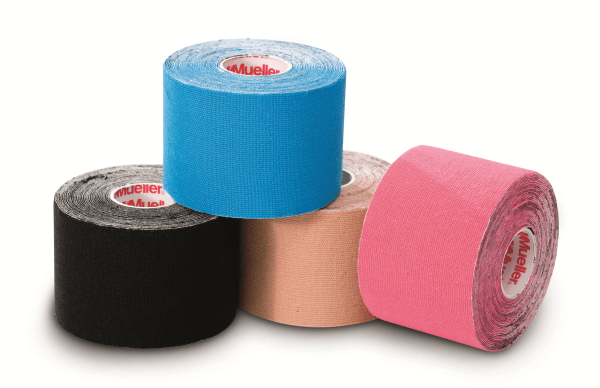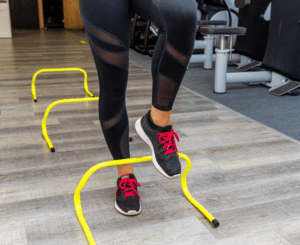What is it?
You may have seen bright multi-coloured strips of tape across your favourite athlete over the past few years and wondered what is it, what does it do and could you be using it for your injury? Kinesio tape has been around since the mid-1970s where it was invented by a chiropractor in Japan but only recently has the vivid tape been in the public’s eye. Kinesio tape continues to increase in popularity with new brands developing eye-catching patterns and some of the biggest sporting stages on the planet are filled with athletes wearing the tape.
The idea of the Kinesio taping method is to facilitate the body’s natural healing process while allowing support and stability to muscles and joints without restricting the body’s range of motion. It claims to be used to successfully treat a variety of orthopaedic, neuromuscular, neurological and medical conditions.
Kinesio tape has uni-directional elasticity that is applied along muscles, ligaments and tendons to provide a lightweight support and claims to inhibit or facilitate the firing of muscles or tendons.
What do the colours mean?
The bright red, blue, black, pink or even union jack coloured strips are purely cosmetic and have no clinical difference between them.
What can you use it for?
Whether you’re training for your next triathlon, preparing for the next game, trying to lift heavier weights or just trying to get through the day then this tape may help.
Therapists tend to use Kinesio tape on overuse injuries and it may have a place in problems such as runner’s knee, iliotibial band syndrome, Achilles tendinopathy, rotator cuff injuries, plantar fasciitis and tennis elbow. After application the tape will remain in place for around 3-5 days.
Does it work?
It is fair to say that the majority of evidence supporting the use of Kinesio taping is anecdotal by therapists and patients alike; there is a paucity of evidence within the scientific literature. In 2012, the journal of sports medicine conducted a systematic review of all the current literature which has tested the use of Kinesio taping, the results show the tape had little effect on pain relief, and mixed results on flexibility and muscle strength. It is important to state that the studies assessed were of poor quality and each study stated a need for further research with better quality.
Our own anecdotal evidence at TOPS is also mixed; we do have many patients stating their physical performance and pain has greatly improved by using the tape.
We do hold a small amount of stock so please get in contact. Our therapists are on hand to answer any questions you may have and if needed demonstrate how to apply it so don’t hesitate to get in touch.



